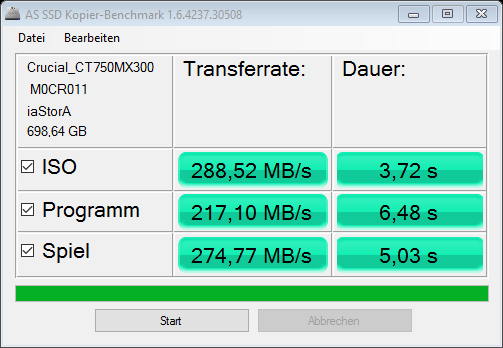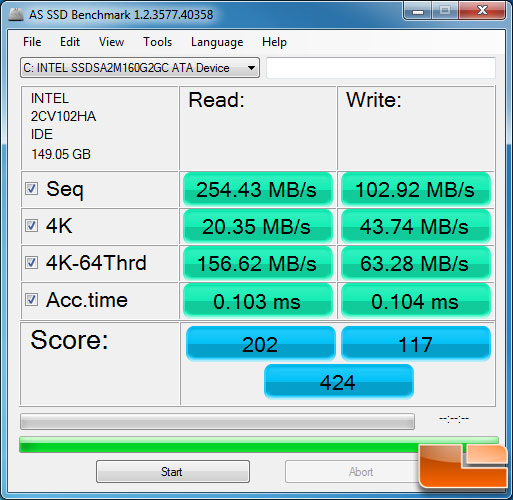
PCMark10 gives drives an overall score across all tests. Iometer is a good benchmark tool for users that want to apply a variety of stressful workloads to test a drive. It’s often used by professionals who need to regularly test their SSDs. Iometer can create a variety of tests for I/O workloads. Iometer tests and reports multiple SSD performance features, including:
#As ssd copy benchmark software#
Because it’s open source and flexible, users can configure the software if they wish. Iometer, initially developed by Intel, is now an open source SSD benchmarking software. CrystalDiskMark supports a queue depth of up to 32. Users can measure sequential read/write speeds and random read/write speeds. CrystalDisk software solutions have a very simple interface but are popular among hard drive and solid state drive owners. It can also help users decide when to optimize their SSD if needed. CrystalDiskMarkĬrystalDiskMark offers SSD benchmarking for a variety of drives and scenarios. Users can also test the access time of their SSD and observe their drive’s performance while making copies depending on file size and amount. 4K testing for 64 threads, which places the read and write operations throughout the 64 threadsĪS SSD allows users to put the software on a USB drive, which they can then use with a variety of SSDs.AS SSD offers three test options for benchmarking different file sizes:
#As ssd copy benchmark windows#
AS SSDĪS SSD, for Windows 10, uses uncompressed data for its benchmark operations. Make an I/O comparison between data from a test file and data written per block.ĪTTO’s Windows version is more commonly known, but ATTO also offers a macOS version with features such as snapshots and custom transfer sizes.If the software detects any errors during the test, it will halt the process.

ATTO tests maximum transfer speed, as well as a variety of transfer sizes and test lengths.ĪTTO supports overlapped I/O requests and a variety of queue depths. ATTOĪTTO Disk Benchmark tests HDDs, SSDs, and RAID arrays it can also benchmark controllers, including RAID controllers. Some also test hard drives and other data storage devices. The following products test SSDs under a variety of conditions. Queue depth measures how many I/O requests can wait at one time on an SSD.Īlso Read: Best & Fastest SSDs of 2021: Features & Pricing Top SSD Benchmark Tools 4K: the number of bytes in a sector on a drive this amount differs from a 512-byte sector, which is more common in hard drives.Latency: the length of processing time that an input or output requires.Input and output refer to writing and reading data to and from a drive. IOPS: SSD input/output operations per second.Throughput is measured in bytes per second - in SSDs, more commonly megabytes or gigabytes. Throughput: simply a word that describes data transfer rate for drives.If you aren’t familiar with the concept of benchmarking or the details of how SSDs perform, the following terms are very commonly used to describe SSD specifications. It should not be a one-time test that can never be recreated that suggests inaccuracy and uncertainty about how the test actually occurred. A thorough benchmark result should be replicable: someone should be able to reliably repeat the test environment.

SSD benchmarks test both sequential and random read and write speeds. Tests for enterprise SSDs should give consistent information about how the drives will perform, rather than misleading consumers with inaccurate speeds. All SSD benchmark preparation should involve appropriate preconditioning - preparing the drive to be steady.



 0 kommentar(er)
0 kommentar(er)
